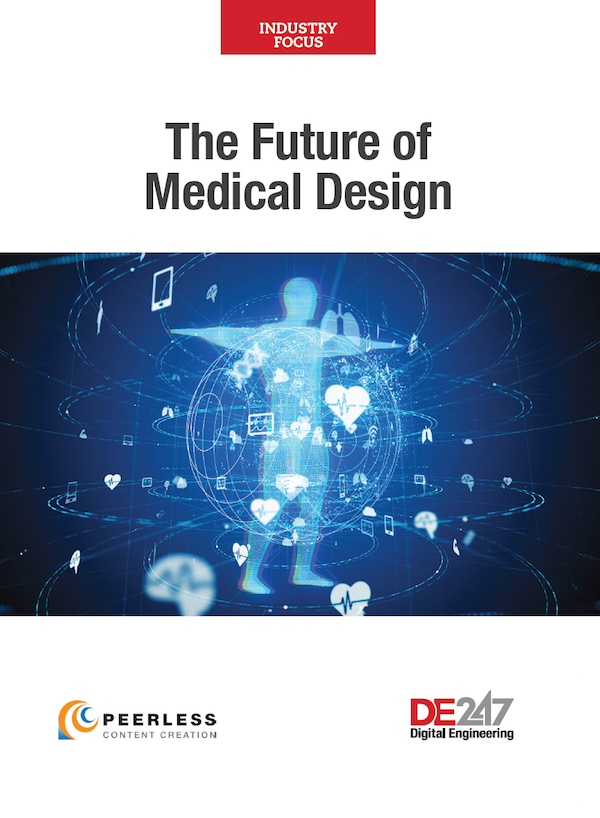Industry Focus: The Future of Medical Design

February 25, 2021
The field of medical device and healthcare solution design is complex. In addition to the complexities of engineering solutions that must interact with the human body, there are also numerous regulatory and compliance hurdles to be overcome. That means development cycles can be long and arduous.
But that is changing.
New rules and technologies have enabled a greater role for digital simulation of these products, including, for example, early-stage digital trials. Simulation and high-performance computing (HPC) have also enabled accelerated product development.
In this special focus issue, we examine some of the key challenges of medical device design, and new technology solutions that are making it easier for engineers to rapidly create new healthcare solutions.
Inside This Issue:
Medical Device Simulation’s Next Frontier
Simulation-led workflows now dominate early-stage device design and have edged into bench testing and validation.
Wearable Medical Devices Present Engineering Challenges
Packaging is critical; mechanical and electrical requirements are just as important, and must be protected.
3D Printing in a Post-COVID-19 World
Mass customization and flexibility ensure AM’s role in the post-COVID world.
Ventilator Project Spurs Inventive Collaboration and Design Under Lockdown
Designers and engineers rethink ventilator functions, prototyping and production.
The Human Side of Simulation
Incorporating human body models as part of simulation-driven design improves design outcomes, resulting in highly personalized, safer products.
When Robotics Intersect a Pandemic
Robotics and the technology that drives them have stepped up to the plate to assist healthcare workers and patients.
Made for You—Just You
Photogrammetry and AM open new markets for personalized healthcare, eyewear, jewelry and more.
3D Printing Fills Nasal Swab Void
3D printing companies and medical researchers are coming together to accelerate production of nasal swab designs to quickly address COVID-19-related shortages.
Latest News








